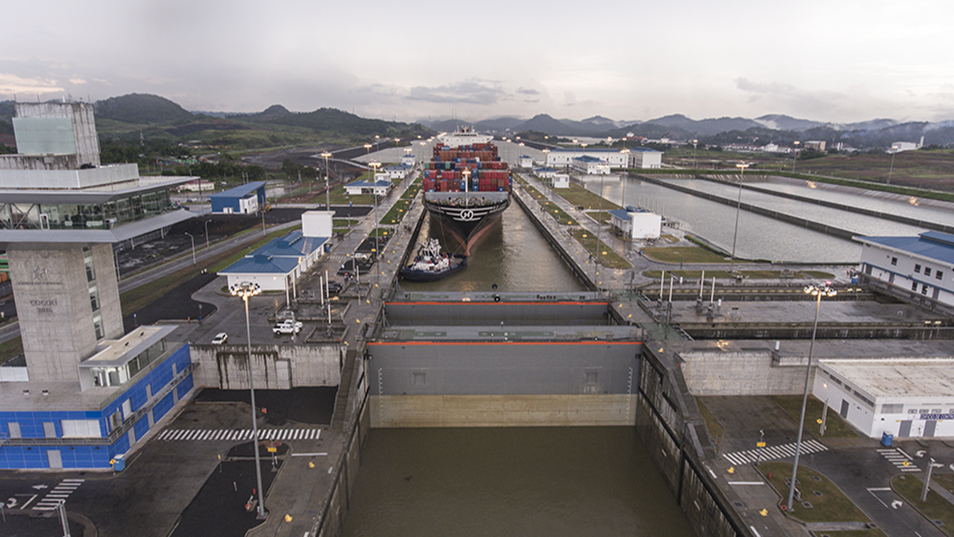The GUPC consortium, led by Sacyr, completed the three-year maintenance period of the third set of locks of the Panama Canal.
In these 36 months, nearly 6,500 vessels have sailed through the new Canal, which has registered an availability of 99.97%, surpassing the contractual obligation to reach 99.6%. Furthermore, there have been no incidents during this time attributable to GUPC.
The vessels that sail through the neopanamax locks represent 51% of the Canal's revenues from tolls, on the back of their greater cargo capacity.
The largest size of vessels represents 3.4 times more tons per transit compared to the original locks. The Canal offers a daily average transit rate of around 7.5 vessels in the neopanamax locks, but up to 12 vessels have sailed through in a single day.
Six percent of world trade
In 2018, 62% of the vessels that sailed the canal had their origin or destination in the United States. This country is one of the main users of the interoceanic passage, followed by China, Mexico, Chile and Japan. Around 14 vessels per day sail through the locks of Agua Clara, in the Pacific, and Cocolí, in the Atlantic, depending on the availability of water.
Over 50% of the vessels have transported containers; 26% corresponded to liquefied petroleum gas; and another 11% to liquefied natural gas (LNG). Other vessels that have used the locks are dry and liquid bulk carriers, vehicle and passenger carriers.
Record tonnage
In 2018, a new tonnage record was established, as 38 million tons of cargo were reached.
In financial year 2017 (from October 1, 2017 to September 30, 2018), the third set of locks already accounted for 37% of total toll revenues and 34% of the tonnage going through the Canal.
Third Set of Locks: sustainable and efficient
Sacyr led GUPC, the consortium in charge of the design and construction of the third set of locks between 2009 and 2016.
The new lock chambers measure 427 meters in length by 55 meters width and 18.3 meters depth and allow the passage of post-Panamax vessels. This is the most significant engineering work in the world due to its technical and technological complexity. http://historiasdelcanal.sacyr.com/es
The Panama Canal has water tanks for each chamber in the Cocolí and Agua Clara locks, which guarantees the reuse of up to 60% of this resource in each lock and re-duces water consumed by 7% in each transit compared to the current ones. This sav-ing enables the transit of two more vessels per day.
Regarding the lock-filling times, the figures also exceed those agreed. If the average time of filling the locks required by the client was between 46.1 and 50.5 minutes with the use of the pools, the current time now stands at between 42.5 and 43.7 minutes.
Without the use of the pools, the average time to fill the locks required by the client was 26.5 to 28 minutes, and now the actual time executed is 24.8 to 26 minutes.
The concrete used in its construction is of excellent quality and widely exceeds the margins of the project, with a durability of more than 100 years. In the new locks five million m3 of concrete have been used, the equivalent to 50 towers of 236 meters or 450 buildings of 20 floors in height.
During the performance of the work a world record was reached in the casting of con-crete: 170,000 m3 of concrete per month, equivalent to what would be used in two tow-ers of 236 meters in height. Furthermore, 300,000 tons of steel were used.
The third set of locks allows the sailing of vessels with triple capacity, which has a posi-tive impact on the global logistics industry, thanks to which, ports around the world have changed their logistics platforms to receive the post-Panamax vessels.
Increasing the load also results in a reduction in CO2 emissions, as the same cargo is transported by fewer vessels.
